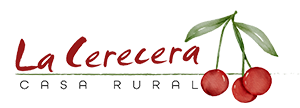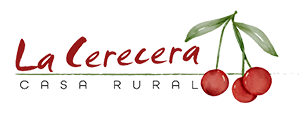On the other hand, foraging can often lead to harmful practices where individuals take more than required without considering its impact on local ecosystems. It may involve trampling delicate flora in pursuit of specific plant species, leading to soil degradation and damaging nearby wildlife populations. It’s a good idea to approach wildcrafting with an ecological perspective by understanding how our actions affect biodiversity conservation. By embracing this mindful attitude towards nature, we protect valuable resources and learn about their inherent properties while enjoying their benefits sustainably. The surface is a bit shiny or oily as well as translucent, so you can see the vertical lines of the gills through the cap.
Genus Psilocybe
They grow in similar environments, such as grassy fields and lawns, and feature a slender stem and small cap. However, Panaeolous species typically have darker, more mottled gills and caps that are smoother than the pointed, bell-like caps of liberty caps. Some Panaeolous species are mildly psychoactive, but they generally contain lower concentrations of psilocybin and do not produce the same intensity of effects as liberty caps.
- The dark brown color of these bite-sized delicacies is often a sign that they’re dried, but sometimes they take on a lighter chestnut shade when moist.
- Magic mushrooms have a long and storied history in various cultures.
- One needs to consume a lower dosage of liberty caps in comparison to Psilocybe cubensis in order to reach the same intensity of subjective effects.
- To make it, grind the dried mushrooms into small pieces, then steep them in hot (but not boiling) water for about minutes.
- For example, in places like Oregon and Colorado, recent legislative changes have made possession of small amounts of psilocybin mushrooms a low-priority offense or legal in some cities.
Liberty caps look like brown or tan mushrooms with pointed tips and no stem. Their color may vary from light yellow-brown color to dark brown, depending on the environment where they’re growing. Growing liberty cap mushrooms is incredibly difficult because they require decaying grass roots in order to grow. Ultimately, creating the ideal environment to grow liberty cap mushrooms is a challenging task, so foraging for them in grassy patches of land is much easier. I now turn to some similar-looking mushrooms that grow in the same grassland habitat as liberty caps.
What are the Potential Benefits of Consuming Liberty Caps?
They are less like straight sticks and more like wiggle strings. Although they are wiggly, they do not easily collapse and feel solid. As the sun dries the cap, it transforms from the top and spreads downwards, becoming opaque and cream coloured.
Dangers of Magic Mushrooms
Some differences between the Amanita Muscaria and the P Semilanceata include a ring zone on the stem and rusty brown spores. Like the Psilocybe Semilanceata, Pholiotina Rugosa too is hygrophanous. The Mexican mycologist (and Psilocybe authority) Gastón Guzmán wrote in his 1983 monograph on psilocybin mushrooms that liberty caps are the world’s most widespread psilocybin mushroom species. This is because it is in a large number of countries, with widespread distribution in Europe — where they are thought to be a native species. Put simply, it is a species of psilocybin mushroom, known as Psilocybe semilanceata. Liberty caps are one of the most widely popular psilocybin mushrooms in nature and one of the most potent.
The data-driven liberty cap field guide
However, the mushrooms do not grow directly on the dung as Psilocybe cubensis mushrooms do. It is nearly impossible to truly gauge the exact amount of psilocybin you are ingesting when munching on dried magic mushrooms or sipping on Liberty Cap-infused teas. • If the cap leaves behind dark, purplish-brown spores whenplaced on a piece of paper while drying out, it is more than likely a LibertyCap mushroom. It can be rather liberty caps identification difficult to identify mushrooms that you have picked from the wild.
Flicking the cap before harvesting can help disseminate spores, and slicing the mushroom with your fingernail where the stem reaches the soil can help prevent damage to the mycelium beneath. The best known feature of the liberty caps is the nipple on the top. Pholiotina Rugosa is an extremely toxic lookalike of the liberty caps. However, they have some key differentiating features from the Psilocybe Semilanceata, including an annulus zone on the stem and rusty brown spores.

